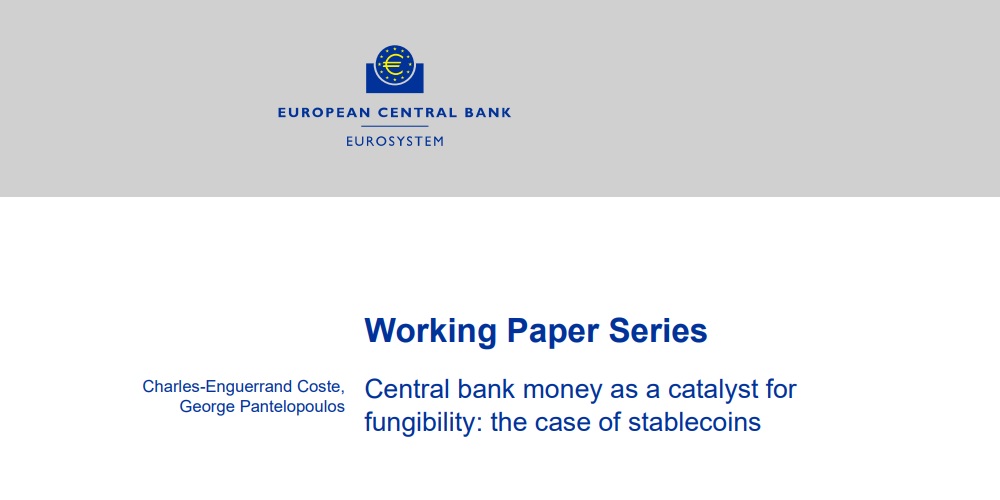
To ensure that means of payments are readily interchangeable at face value – i.e. fungible – for retail
payments, three elements are required: (1) setlement finality; (2) interoperability; and (3) seamless
convertibility of the means of payment into the “ultimate” or quasi-ultimate means of payment, according to the authors of a new ECB working paper called „Central bank money as a catalyst for fungibility: the case of stablecoins„.
This paper argues that stablecoins issued by different issuers on different blockchains can be fungible to
the same extent as commercial bank deposits from different banks provided that (i) payment and
setlement technologies are interoperable, (ii) payments are transacted on ledgers that offer
setlement finality, and (iii) that central bank money acts as the anchor to the monetary system
(assuming that the central bank money is itself underscored by a homogenous unit of account).
„On this basis, this paper asserts that tokenised funds and off-chain collateralised stablecoins are fungible
means of payments under some conditions, and that on-chain collateralised stablecoins can be prima
facie classified as fungible means of payments, so long as the identical preconditions associated with
accomplishing means of payment fungibility for tokenised funds/off-chain collateralised stablecoins
can be fulfilled, and on the premise that the on-chain collateral can be readily converted into higher
level money. Finally, it is determined that algorithmic stablecoins are not fungible means of payments.” – said Charles-Enguerrand Coste, one of the authors.
Banking 4.0 – „how was the experience for you”
„To be honest I think that Sinaia, your conference, is much better then Davos.”
Many more interesting quotes in the video below: